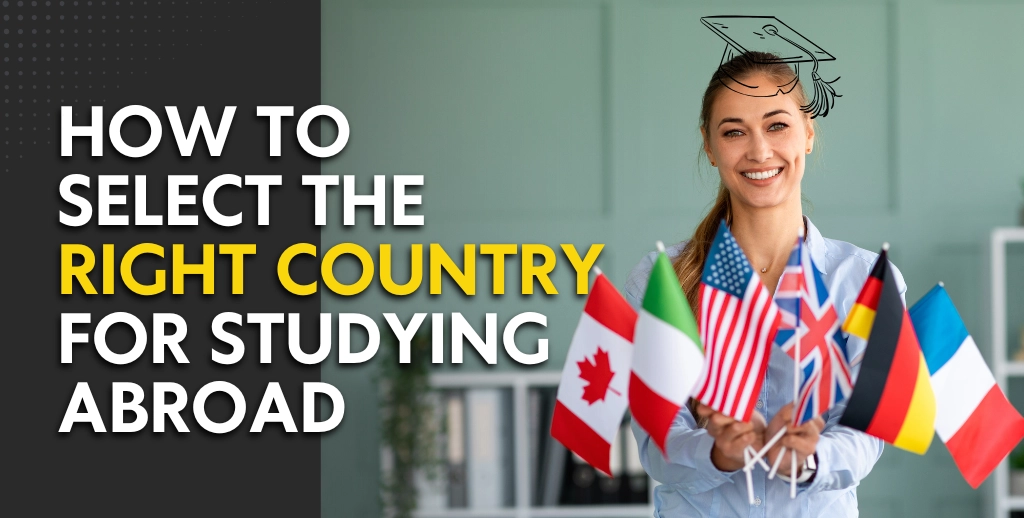Deciding to study abroad is a major milestone in a student’s life. For Indian students, it offers an opportunity to receive a global education, build international networks, and shape a successful future. But with countless destinations and universities available, narrowing down your choices can feel overwhelming.
Whether you’re considering the best study abroad options after 12th or looking for postgraduate opportunities, this comprehensive guide—crafted with insights from Jaivik Overseas study abroad experts—will help you make smart, confident decisions.
1. Know Your Academic & Career Goals
Start by reflecting on what you want from your education:
-
What subject or course excites you the most—engineering, management, life sciences, or humanities?
-
Are you inclined towards research, or do you prefer hands-on, industry-based programs?
-
What kind of career are you aiming for post-study—corporate, academic, entrepreneurial, or public sector?
-
Are you open to settling abroad or planning to return to India after studies?
Clear answers to these questions will shape your study abroad decision making strategy and prevent future confusion.
2. Best Countries for Indian Students to Study Abroad
Here are some of the top destinations preferred by Indian students, based on factors like cost, opportunities, and student-friendliness:
🇨🇦 Canada
-
Reasonable tuition fees and accessible permanent residency programs
-
Up to 3 years of post-study work opportunities
-
A safe, inclusive environment with a large Indian student community
🇦🇺 Australia
-
Excellent universities with global recognition
-
Flexible admission cycles (February and July)
-
Clear PR routes based on skills and regional pathways
🇬🇧 United Kingdom
-
2-year Graduate Route visa after completing studies
-
Home to both elite institutions and budget-friendly universities
-
Quick visa processing and multiple intake options
🇺🇸 United States
-
Offers top global universities in every field
-
STEM students can stay up to 3 years through OPT
-
Wide-ranging scholarship options and research facilities
Expert Insight: Don’t just follow trends—match your country choice with your academic focus, career plans, and financial comfort.
3. Compare Cost of Education & Living
Each country comes with its cost structure, so evaluate:
-
Tuition fees—public vs. private university costs
-
Daily expenses—accommodation, food, insurance, and transportation
-
Scholarships—university, government, or private funding opportunities
-
Part-time job rules—Can you work while studying to support expenses?
-
Post-study work options—helps build a career and recoup investment
Countries like the UK, Canada, and Australia may have higher tuition fees but offer strong ROI through work rights and career opportunities after graduation.
4. Prioritize Your Course Over Destination
Instead of choosing a country first, start with your desired field of study and explore where it is best taught.
Identify trending subjects with job potential
Look into placement rates and alumni outcomes
Evaluate if the university specializes in your domain
Hot Courses in Demand:
-
Artificial Intelligence, Machine Learning
-
Finance, Data Analytics
-
Biomedical Sciences
-
Core Engineering (Civil, Electrical, Software)
-
Digital Media, UI/UX, and Marketing
5. How to Shortlist the Right University
Use this checklist to evaluate universities abroad:
-
Reputation of your chosen department
-
Accreditation and world rankings
-
Campus lifestyle, infrastructure, and safety
-
Internship and placement records
-
Flexibility of intakes and deadlines
-
Entry requirements (IELTS/PTE, SOPs, academic marks, etc.)
Mid-ranked universities often provide better student-teacher engagement and industry exposure compared to higher-ranked but overcrowded institutions.
6. Language, Lifestyle & Adaptability
Your comfort and adaptability matter more than you think.
Ask yourself:
-
Can I adjust to a new culture and climate?
-
Will I be comfortable with the country’s language, food, and lifestyle?
-
Do I want a fast-paced city life or a peaceful campus in a smaller town?
English-speaking countries like the USA, UK, Canada, and Australia are often easier to adjust to—but always consider your own tolerance for change and openness to learning.
7. Post-Study Work Rights & PR Pathways
Thinking long-term? Understand what happens after you graduate.
Canada: 3-year Post Graduate Work Permit; PR accessible through Express Entry
Australia: 2–5 year post-study work permit depending on course and location
UK: 2-year Graduate Route for all international graduates
USA: 1-year OPT after graduation (3 years for STEM programs); further stay possible via H-1B and employer-sponsored Green Card
These post-study policies play a major role in your return on investment and future settlement plans.
8. Don’t Hesitate to Seek Guidance
Confused with too many choices? It’s okay. That’s where study abroad experts step in.
At Jaivik Overseas, we support students in choosing the right country and university, preparing for IELTS/PTE, and successfully applying to top universities worldwide.
Why students trust Jaivik Overseas study abroad experts:
-
Personalized shortlisting of countries & universities
-
Coaching for IELTS & PTE by certified trainers
-
SOP, LOR, and application assistance
-
Visa guidance and document preparation
-
Help with education loans, scholarships, and travel arrangements
-
Local offices for walk-in support and post-departure services
If you’re located in Delhi NCR, visit our study abroad consultants in Ghaziabad or connect with our overseas education consultancy in Noida.
9. Don’t Miss Out on Deadlines
Most universities abroad follow fixed application windows. Plan 8–12 months in advance.
Popular Intakes:
-
September/Fall – Major intake in Canada, UK, USA
-
January/Winter – Available in UK, Canada, Australia
-
May/Summer – Smaller intake, limited courses
Always check intake timelines, entrance test dates (like IELTS), and visa processing windows.10. Smart Tips from Jaivik Overseas
-
Take a career profiling test before finalizing your path
-
Write SOPs in your voice—don’t copy templates
-
Stay alert about fake agents and blacklisted universities
-
Practice your IELTS/PTE regularly; scores impact scholarships and visa
-
Attend our free counseling sessions to get clarity with zero pressure
Final Thoughts: Shape Your Global Future with Confidence
Your journey abroad begins with one smart decision: choosing the best country for Indian students to study abroad
Don’t get lost in online information—get personalized, expert help to turn your dream into a plan. Whether you’re looking for the best study abroad options after 12th or a master’s program abroad, we at Jaivik Overseas will walk with you, every step of the way.
Ready to start your journey?
Call: +91 99712 26347, +91 9971881347
Website: www.jaivikoverseasconsultants.com
Offices: 333 Orbit Plaza, Crossing Republik, Ghaziabad, Uttar Pardesh, 201016
Read More: IELTS vs TOEFL vs PTE – Which Test Should You Take?
Frequently Asked Questions (FAQs)
Q1. Which is the best country for Indian students to study abroad?
Ans. It depends on your goals, course, and budget. Canada, Australia, the UK, and the USA are among the top choices due to their high-quality education, post-study work opportunities, and strong job markets.
Q2. How do I know which university is right for me?
Ans. You should consider the university’s reputation for your course, placement support, tuition fees, location, entry requirements, and overall campus experience. A study abroad expert can help you shortlist options based on your academic profile.
Q3. When should I start applying to study abroad?
Ans. Ideally, you should start your application process 8 to 12 months before your preferred intake (e.g., September or January). This gives you enough time for test preparation, documentation, and visa processing.
Q4. Do I need to take IELTS or PTE to study abroad?
Ans. Yes, most universities require an English proficiency test like IELTS or PTE for admission. The required score may vary by country and university. At Jaivik Overseas, we offer coaching to help you score higher.
Q5. Can I work while studying abroad?
Ans. Yes, most countries allow international students to work part-time while studying. For example, in Canada, Australia, and the UK, students can work up to 20 hours per week during semesters and full-time during breaks.



2 Comments
Thank you for going through my article and sharing your feedback. I really appreciate your interest. Could you please let me know which part of the content you would like me to explain in more detail? This will help me address your specific doubts and provide you with a clearer explanation. I’ll be happy to give you more information or examples so that everything is easy to understand.
For further clarification, you can also reach me directly at https://wa.me/919971226347